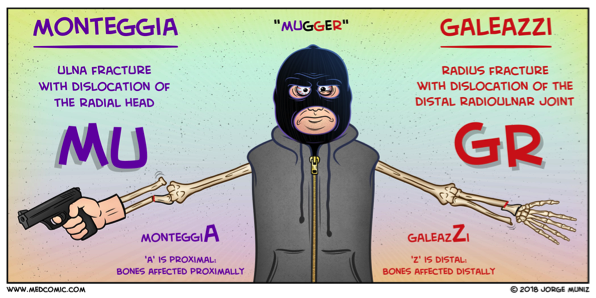One question that has been visited before, but came up again on recent shifts -- the non-crashing angioedema patient i.e. they do not require intubation. We will save difficult intubations in edematous airways for a different day.
Specifically, the question that came up was eloquently phrased as “Wait, TXA? FFP? Why do we do that again?” Today we’ll touch on angioedema in general but focus on the treatment of bradykinin-mediated angioedema.
Angioedema!
(from https://coreem.net/core/angioedema/)
What is it?
Paroxysmal, non-demarcated swelling of dermal or submucosal layers of skin or mucosa.
(super exciting, I know).
What flavors are there?
Broadly speaking, we have the mast-cell / histamine-mediated vs bradykinin-mediated vs we-have-no-idea idiopathic mediated.
Yes, that list is from UpToDate. No, I had never heard of Gleich Syndrome. In the emergent setting, we often will not be able to diagnose one of these idiopathic causes and will typically treat it similarly to histamine-mediated.
EMCRIT also has a nice chart that summarizes some of the differences between histamine vs bradykinin mediated.
Key Points
History is SUPER important!
The onset of bradykinin-mediated angioedema is on the scale of hours; histamine-mediated is more on the scale of minutes
Urticaria more frequently associated with histamine mediated
Think about bradykinin-mediated if there is no improvement to antihistamines or steroids!
Treatment Options (The Fun Stuff)
For histamine-mediated, the treatment is similar to how you may treat any allergic reaction of various severities. Diphenhydramine 50 mg IV, famotidine 20 mg IV, IV methylprednisolone 125 mg, IM 0.5 epinephrine.
Let’s focus on the more confusing treatments for bradykinin-mediated angioedema.
Tranexamic Acid (TXA)
Theory: TXA inhibits the conversion of plasminogen to plasmin (which is why we use it for bleeding). But that step is also key to bradykinin generation.
Does it work?: Jury’s out. There was one study that demonstrated improvement in 27 of 33 patients when treated with TXA alone. https://pubmed.ncbi.nlm.nih.gov/29735174/ The data is otherwise sparse.
Should I try it? Reasonable to try as it’s safe, inexpensive and universally available, although the efficacy is still controversial. Easier to obtain than FFP (which requires thawing).
C1-inhibitor concentrate (Berinert, Ruconest, Cinryze)
Theory: Blocks two key steps in bradykinin generation.
Does it work?: Generally treated as front-line therapy for congenital angioedema w/ deficient C1-inhibitor activity. Case studies suggest that it may be useful for ACEi-induced or thrombolytic-induced angioedema as well.
Should I try it? Well we don’t have it. And it’s super expensive. 1g IV as a slow push over 10 minutes.
Fresh Frozen Plasma (FFP)
Theory: If it’s ACEi induced, FFP helps by providing more ACE. If the angioedema is C1-inhibitor deficiency induced, FFP also has C1. Theoretically it should help then reduce bradykinin levels.
Does it work?: Case reports suggest it may be effective for ACEi-induced and hereditary angioedema. A retrospective cohort study found that patients treated w/ FFP were less likely to require intubation. https://www.ncbi.nlm.nih.gov/pubmed/26953061
Should I try it? Reasonable to try. Widely available. 2 units initially.
Icatibant & Ecallantide
Theory: Icantibant is a bradykinin antagonist. Ecallantide is a kallikrein inhibitor (which then blocks the production of bradykinin)
Does it work?: The “FAST” trials (For Angioedema Subcutaneous Treatment) overall suggest that icatibant reduces times to reduction in symptom severity specifically in patients with C1-INH deficiency. Newer studies suggest icatibant is ineffective against ACEi-induced angioedema (https://pubmed.ncbi.nlm.nih.gov/27913306/). Overall ecallantide has not been significantly more effective compared to placebo in RCTs.
Should I try it? Well we don’t have it. And it costs 10k. So not a reasonable option for most emergency departments, including ours.
So What Should I do? Take Home Points!
Emcrit has a much more in-depth explanation and a great algorithm that can be found here. https://emcrit.org/ibcc/angioedema/#algorithms
But in short.
If unstable, intubate (carefully)
Take a good history and decide if it sounds more histamine-mediated or bradykinin-mediated
If suspect histamine-mediated (or unsure), reasonable to trial antihistamines +/- steroids
If step 3 doesn’t work or suspect bradykinin, reasonable to trial TXA and FFP.
Still not working? See if you can get C1-inhibitor concentrate! (Spoiler, you probably can’t)
Sources
https://coreem.net/core/angioedema/
https://emcrit.org/ibcc/angioedema/
https://www.uptodate.com/contents/an-overview-of-angioedema-pathogenesis-and-causes






